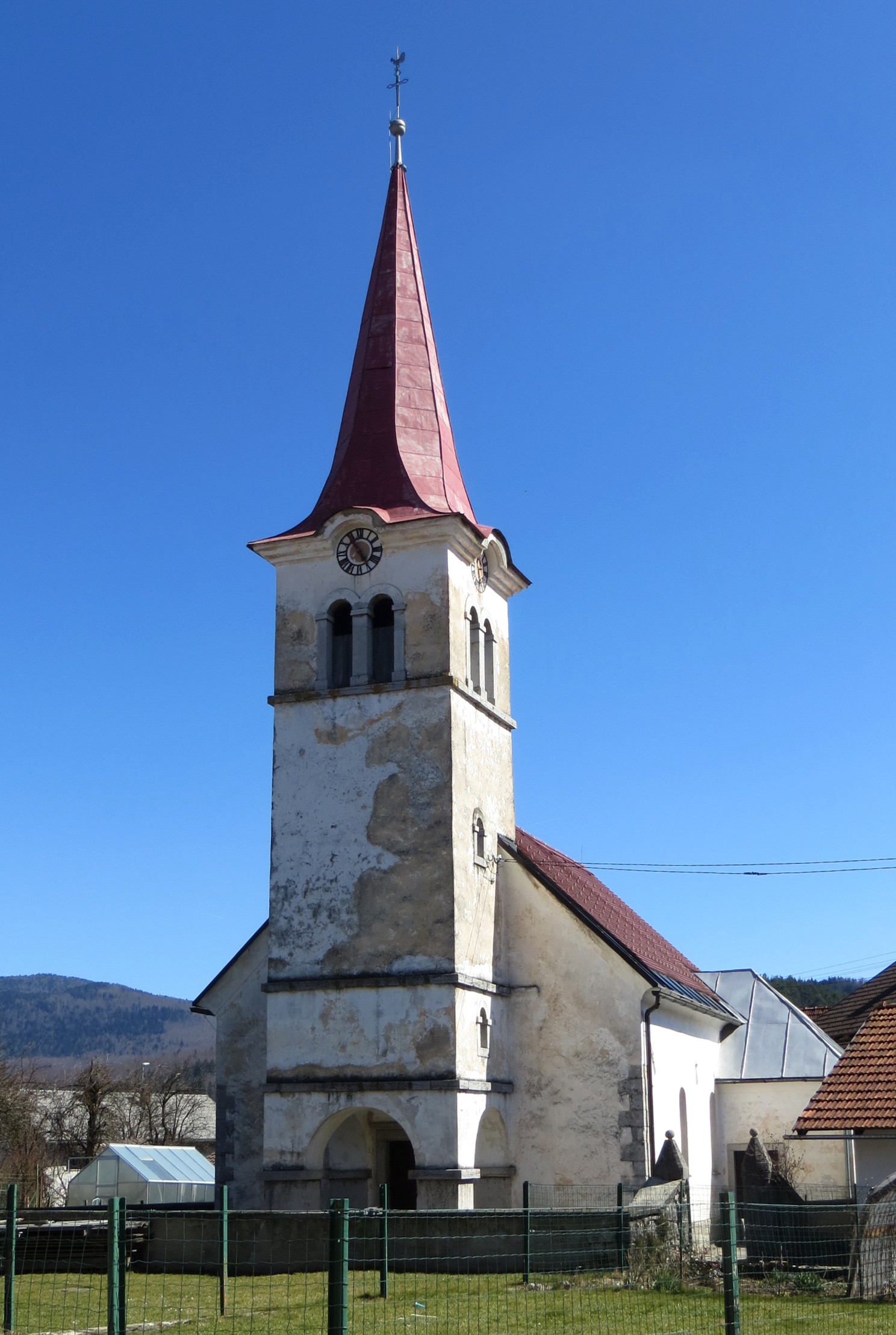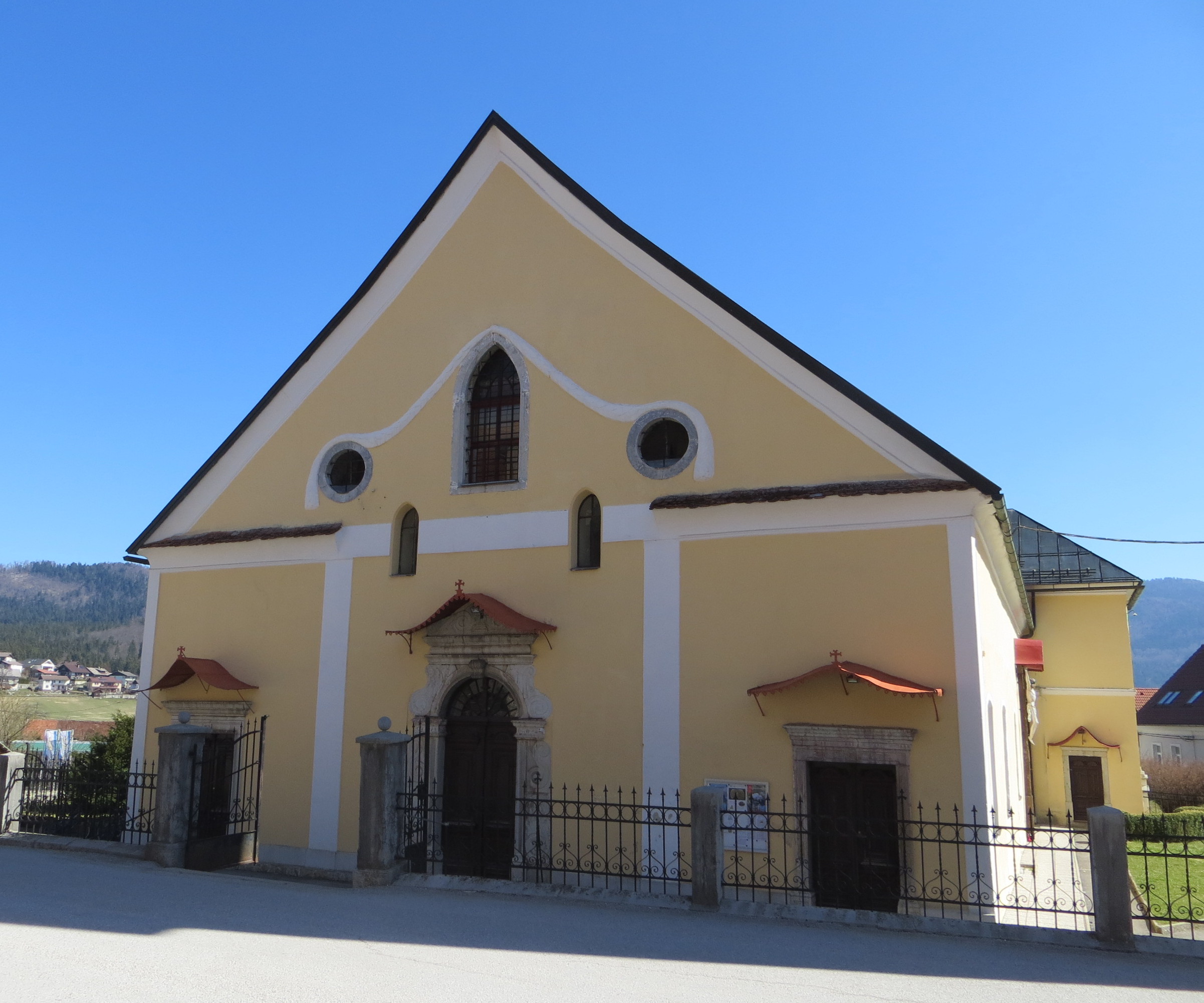|
Kozarišče
Kozarišče (, in older sources ''Kozaršče'', , ) is a village south of Stari Trg pri Ložu in the Municipality of Loška Dolina in the Inner Carniola region of Slovenia. The area of the village extends south of the main settlement right to the Snežnik Plateau and to the border with Croatia. Snežnik Castle, a 13th-century castle, is located just southwest of the village. Church The local church in the settlement dates to the mid-16th century and is dedicated to Benedict of Nursia, Saint Benedict and belong to the Parish of Stari Trg pri Ložu. Mass graves Kozarišče is the site of two known Mass graves in Slovenia, mass graves associated with the Second World War. The Kozlovka Cave Mass Grave () is located in a spruce woods along the road from Kozarišče to Knežak. It is a deep shaft that contains the remains of Slovene anticommunist militia members. The Grobnica Mass Grave () is located in the forest southwest of the settlement. It contains an undetermined number of victi ... [...More Info...] [...Related Items...] OR: [Wikipedia] [Google] [Baidu] |
Mass Graves In Slovenia
Mass graves in Slovenia were created in Slovenia as the result of extrajudicial killings during and after the Second World War. These clandestine mass graves are also known as "concealed mass graves" () or "silenced mass graves" () because their existence was concealed under the communist regime from 1945 to 1990.Ferenc, Mitja, & Ksenija Kovačec-Naglič. 2005. ''Prikrito in očem zakrito: prikrita grobišča 60 let po koncu druge svetovne vojne''. Ljubljana: Muzej novejše zgodovine. Some of the sites, such as the mass graves in Maribor, include some of the largest mass graves in Europe. Nearly 600 such sites have been registered by the Commission on Concealed Mass Graves in Slovenia, containing the remains of up to 100,000 victims. They have been compared by the Slovenian historian Jože Dežman to the Killing Fields in Cambodia. Background Many of the mass graves were created during the war, but the larger sites date from after the war. The wartime graves vary from those ... [...More Info...] [...Related Items...] OR: [Wikipedia] [Google] [Baidu] |
Municipality Of Loška Dolina
The Municipality of Loška Dolina (; ) is a municipality in Slovenia. It is part of the Inner Carniola traditional region. Snežnik Castle and Cross Cave are located in the municipality. Its municipal seat is the town of Stari Trg pri Ložu. It borders Croatia. Settlements In addition to the municipal seat of Stari Trg pri Ložu, the municipality also includes the following settlements: * Babna Polica * Babno Polje * Dane, Loška Dolina, Dane * Dolenje Poljane * Iga Vas * Klance * Knežja Njiva * Kozarišče * Lož * Markovec * Nadlesk * Podcerkev * Podgora pri Ložu * Podlož * Pudob * Šmarata * Sveta Ana pri Ložu * Viševek * Vrh, Loška Dolina, Vrh * Vrhnika pri Ložu References External links *Municipality of Loška Dolina on Geopedia Municipality of Loška Dolina, Municipalities of Slovenia, Loska Dolina 1994 e ... [...More Info...] [...Related Items...] OR: [Wikipedia] [Google] [Baidu] |
Snežnik Castle
Snežnik Castle (, ) is a 13th-century castle located in the southwest part of the Lož Valley near the settlement of Kozarišče in the municipality of Loška Dolina, Slovenia. Its name is coincidentally identical to a univerbation based on the Slovene word ''sneg'' 'snow', but is actually a Slovenized form of the name of the noble house of Schneberg, whose possession it initially was. The Schnebergs were followed by the houses of Lamberg, Eggenberg, Lichtenberg, and Schönburg-Waldenburg. History The date of the castle's construction is unclear; its existence is first implied in 1269, by way of mention of its owner Meinhard von Schneberg (, ). The castle itself was first mentioned in 1461, as the manor of ''Sneberk''; at the time it was a possession of the Patriarchate of Aquileia, with the Schnebergs as their ministeriales. The family fractured the estate through multiple heirs; by the late 14th century the castle had several co-owners. In 1393, a quarter-share of it a ... [...More Info...] [...Related Items...] OR: [Wikipedia] [Google] [Baidu] |
Flag Of Slovenia
The national flag of Slovenia () features three equal horizontal bands of white (top), blue, and red, with the coat of arms of Slovenia located in the upper hoist side of the flag centred in the white and blue bands. The coat of arms is a shield with the image of Mount Triglav, Slovenia's highest peak, in white against a blue background at the centre; beneath it are two wavy blue lines representing the Adriatic Sea and local rivers, and above it are three six-pointed golden stars arranged in an inverted triangle which are taken from the coat of arms of the Counts of Celje, the great Slovene dynastic house of the late 14th and early 15th centuries. The Slovenian flag's colours are considered to be Pan-Slavism, pan-Slavic, but they actually come from the Middle Ages, medieval coat of arms of the Holy Roman duchy of Carniola, consisting of 3 stars, a mountain, and three colours (red, blue, yellow), crescent. The existing Slovene tricolor, Slovene tricolour was raised for the first t ... [...More Info...] [...Related Items...] OR: [Wikipedia] [Google] [Baidu] |
Croatia
Croatia, officially the Republic of Croatia, is a country in Central Europe, Central and Southeast Europe, on the coast of the Adriatic Sea. It borders Slovenia to the northwest, Hungary to the northeast, Serbia to the east, Bosnia and Herzegovina and Montenegro to the southeast, and shares a maritime border with Italy to the west. Its capital and largest city, Zagreb, forms one of the country's Administrative divisions of Croatia, primary subdivisions, with Counties of Croatia, twenty counties. Other major urban centers include Split, Croatia, Split, Rijeka and Osijek. The country spans , and has a population of nearly 3.9 million. The Croats arrived in modern-day Croatia, then part of Illyria, Roman Illyria, in the late 6th century. By the 7th century, they had organized the territory into Duchy of Croatia, two duchies. Croatia was first internationally recognized as independent on 7 June 879 during the reign of Duke Branimir of Croatia, Branimir. Tomislav of Croatia, Tomis ... [...More Info...] [...Related Items...] OR: [Wikipedia] [Google] [Baidu] |
Parish
A parish is a territorial entity in many Christianity, Christian denominations, constituting a division within a diocese. A parish is under the pastoral care and clerical jurisdiction of a priest#Christianity, priest, often termed a parish priest, who might be assisted by one or more curates, and who operates from a parish church. Historically, a parish often covered the same geographical area as a Manorialism, manor. Its association with the parish church remains paramount. By extension the term ''parish'' refers not only to the territorial entity but to the people of its community or congregation as well as to church property within it. In England this church property was technically in ownership of the parish priest ''Ex officio member, ex officio'', vested in him on his institution to that parish. Etymology and use First attested in English in the late 13th century, the word ''parish'' comes from the Old French , in turn from , the Romanization of Greek, Romanisation of ... [...More Info...] [...Related Items...] OR: [Wikipedia] [Google] [Baidu] |
Benedict Of Nursia
Benedict of Nursia (; ; 2 March 480 – 21 March 547), often known as Saint Benedict, was a Great Church, Christian monk. He is famed in the Catholic Church, the Eastern Orthodox Church, the Lutheran Churches, the Anglican Communion, and Old Catholic Churches. In 1964, Pope Paul VI declared Benedict a Patron saints of Europe , patron saint of Europe. Benedict founded twelve communities for monks at Subiaco, Lazio , Subiaco in present-day Lazio, Italy (about to the east of Rome), before moving southeast to Monte Cassino in the mountains of central Italy. The present-day Order of Saint Benedict emerged later and, moreover, is not an religious order , "order" as the term is commonly understood, but a confederation of autonomous Congregation (group of houses) , congregations. Benedict's main achievement, his ''Rule of Saint Benedict'', contains a set of Decree (canon law), rules for his monks to follow. Heavily influenced by the writings of John Cassian ( – ), it shows st ... [...More Info...] [...Related Items...] OR: [Wikipedia] [Google] [Baidu] |
Castle
A castle is a type of fortification, fortified structure built during the Middle Ages predominantly by the nobility or royalty and by Military order (monastic society), military orders. Scholars usually consider a ''castle'' to be the private fortified house, fortified residence of a lord or noble. This is distinct from a mansion, palace, and villa, whose main purpose was exclusively for ''pleasance'' and are not primarily fortresses but may be fortified. Use of the term has varied over time and, sometimes, has also been applied to structures such as hill forts and 19th- and 20th-century homes built to resemble castles. Over the Middle Ages, when genuine castles were built, they took on a great many forms with many different features, although some, such as curtain wall (fortification), curtain walls, arrowslits, and portcullises, were commonplace. European-style castles originated in the 9th and 10th centuries after the fall of the Carolingian Empire, which resulted ... [...More Info...] [...Related Items...] OR: [Wikipedia] [Google] [Baidu] |
Slovenia
Slovenia, officially the Republic of Slovenia, is a country in Central Europe. It borders Italy to the west, Austria to the north, Hungary to the northeast, Croatia to the south and southeast, and a short (46.6 km) coastline within the Adriatic Sea to the southwest, which is part of the Mediterranean Sea. Slovenia is mostly mountainous and forested, covers , and has a population of approximately 2.1 million people. Slovene language, Slovene is the official language. Slovenia has a predominantly temperate continental climate, with the exception of the Slovene Littoral and the Julian Alps. Ljubljana, the capital and List of cities and towns in Slovenia, largest city of Slovenia, is geographically situated near the centre of the country. Other larger urban centers are Maribor, Ptuj, Kranj, Celje, and Koper. Slovenia's territory has been part of many different states: the Byzantine Empire, the Carolingian Empire, the Holy Roman Empire, the Kingdom of Hungary, the Republic of Venice ... [...More Info...] [...Related Items...] OR: [Wikipedia] [Google] [Baidu] |
Stari Trg Pri Ložu
Stari Trg pri Ložu (; , , ) is a settlement and the administrative seat of the Municipality of Loška Dolina in the Inner Carniola region of Slovenia. Geography The territory of Stari Trg pri Ložu includes the former hamlet of Breg () on the right bank of Obrh Creek, which was also considered part of the neighboring village of Pudob in the past. The site of the former hamlet is the Marof industrial area today, operated by the company MBS List Lesna Industrija Stari Trg. Church The parish church in the settlement is dedicated to Saint George and belongs to the Ljubljana Archdiocese. The parish was created in the second half of the 12th century, and the church was first mentioned in written documents dating to 1221. The original church was rebuilt and expanded on a number of occasions. Frescos from the early 16th century are preserved in the current building and the existing sanctuary A sanctuary, in its original meaning, is a sacred space, sacred place, such as a shrine, pr ... [...More Info...] [...Related Items...] OR: [Wikipedia] [Google] [Baidu] |






